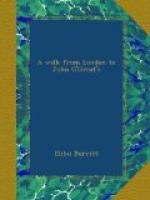The seeds or grasses sown by Mr. Jonas for pasturage and hay are chiefly white and red clover and trefoil. His rule of seeding is the following:—
Wheat, from 8 to 10 pecks per acre
Barley, from 12 to 14 " " "
Oats, from 18 to 22 " " "
Winter Beans, 8 " " "
Red Clover, 20 lbs " "
White Clover, 16 lbs " "
Trefoil, 30 to 35 lbs. " "
This, in New England, would be called very heavy seeding, especially in regard to oats and the grasses. I believe that twelve pecks of oats to the acre, rather exceed our average rule. Good clover seed should weigh two pounds to the quart, and eight quarts, or sixteen pounds, are the usual seeding with us.
As labor of horse and man must be economised to the best advantage on such an estate, it may be interesting to know the expense of the principal operations. The cost of ploughing averages 7s. 6d., or $1 80c. per acre. For roots, the land is ploughed three or four times, besides harrowing, drilling, and rolling. The hoeing of wheat and roots varies from 2s. to 5s., or from 48c. to $1 20c. per acre.
The sheep are all folded on turnips or grass fields, except the breeding ewes in the lambing season. The enclosures are made of hurdles, of which all reading Americans have read, but not one in a thousand ever has seen. They are a kind of diminutive, portable, post-and-rail fence, of the New England pattern, made up in permanent lengths, so light that a stout man might carry two or three of them on his shoulders at once. The two posts are sawed or split pieces of wood, about two inches thick, three wide, and from five to six feet in length. They are generally square-morticed for the rails, which are frequently what we should call split hoop-holes, but in the best kind are slats of hard wood, about two and a half inches wide and one in thickness. Midway between the two posts, the rails are nailed to an upright slat or brace, to keep them from swaying. Sometimes a farmer makes his own hurdles, thus furnishing indoor work for his men in winter, when they cannot labor in the fields; but most generally they are bought of those who manufacture them on a large scale. Some idea of the extent of sheep-folding on Chrishall Grange may be inferred from the fact, that the hurdling on it, if placed in one straight, continuous line, would reach full ten miles!




